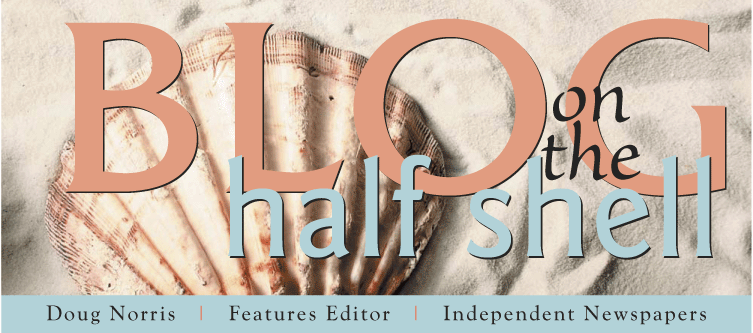With more snow forecast for tomorrow and Wednesday, 2011 is blurring into a blizzard of blizzards. In a couple of weeks, some Pennsylvania rodent will tell the rest of America whether this winter will be a long one or not, but here in New England we don’t need a publicity-seeking groundhog to predict the weather. We’ve got our own clues in nature to investigate, albeit few of them involving toothy mammals, whether the burrowing variety or those attractive Weather Channel personalities bragging about their Doppler radar.
How do you know winter is going to be long, cold and snowy? The hornet’s paper nest will be higher than usual, while the squirrel’s nest will be lower. The wooly worm will wear a jet-black coat, rather than its standard brown-striped russet. Squirrels will have bushier tails. Walnuts and hickory nuts will have thicker hulls. August will have a lot of foggy mornings. Onions will have extra layers. You’ll have to dig deeper to get at your carrots. The north side of any neighborhood trees will be enlarged with extra bark and moss will grow thicker on all of the trees. The bushes will grow more blackberries and the pines will drop more cones than usual. And perhaps you’ll hear the late-night call of the hoot owl throughout autumn, foretelling the next season's severity.
Some weather lore has been turned into proverbs:
The aching of a broken bone predicts rain.
True enough. When it comes to forecasting precipitation, my two surgically reconstructed knees and surgically repaired right elbow are more accurate than Al Roker, Stephanie Abrams and Heather Tesch combined.
One proverb I’d never heard before, but discovered recently on a Web site devoted to American Folklore, has resonance because of the “thunder snow” Rhode Island received during its most recent blizzard, when the sight of lightning and the rumble of thunder in a flurry of early morning snow seemed almost apocalyptic:
If you see lightning in January, you will see snow in April.
Worrisome, because we’ve already had the January lightning, and the thought of April snow on a day when snow piles are stacked like skyscrapers and the temperature may not climb above a single digit is just winter misery overkill.
Based on living through the last decade of winters on a West Barrington Cove, I also know this: When the ducks cluster near the shore, freely mingling with the gulls, geese and swans, and there’s no low tide to provide an easy buffet, a storm’s coming. It’s an observation that I’ve cobbled together in my own weather proverb:
When birds of a different feather flock by the shore together, seal the windows, grab a coat – and get ready for stormy weather.
This week's question: What is your favorite weather lore?
Monday, January 24, 2011
Subscribe to:
Posts (Atom)

